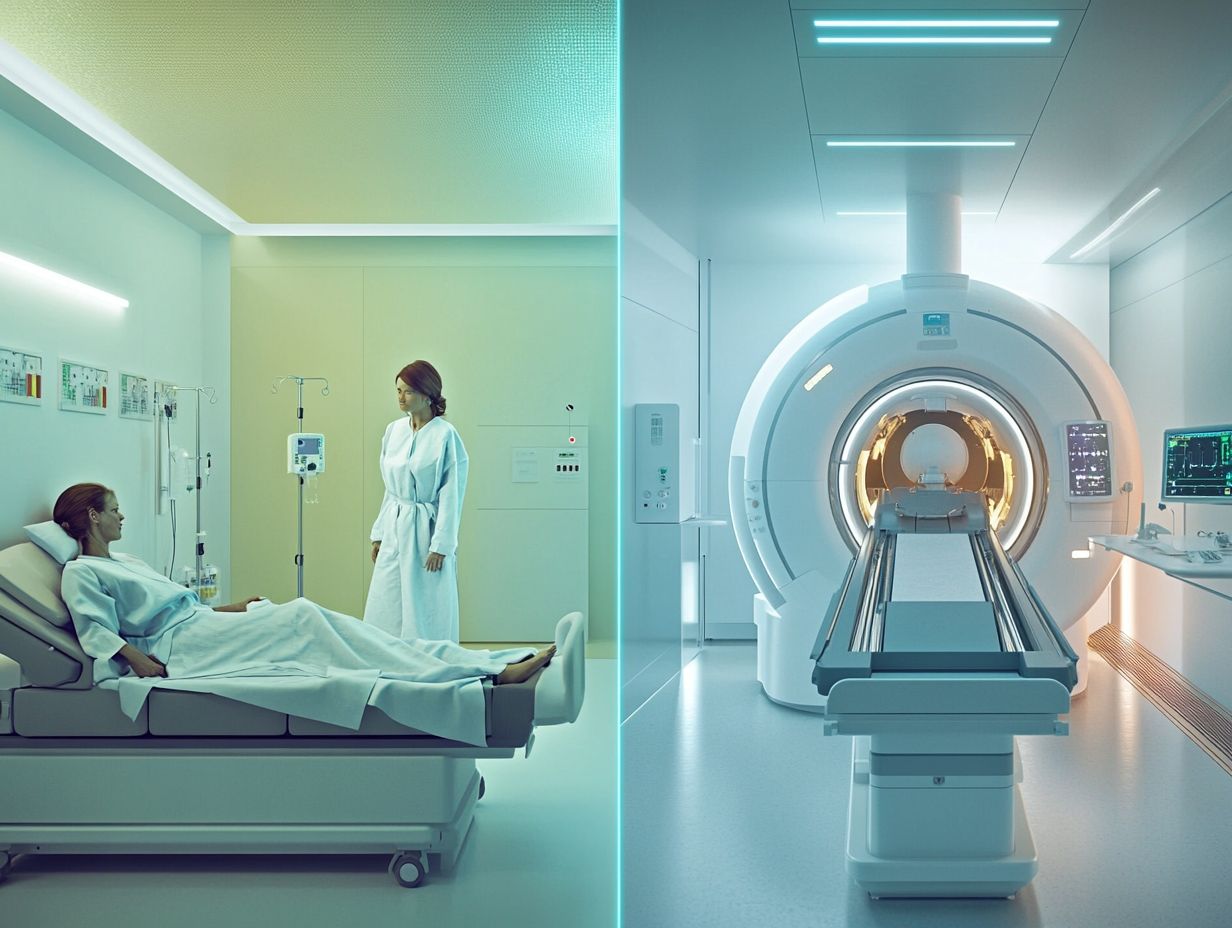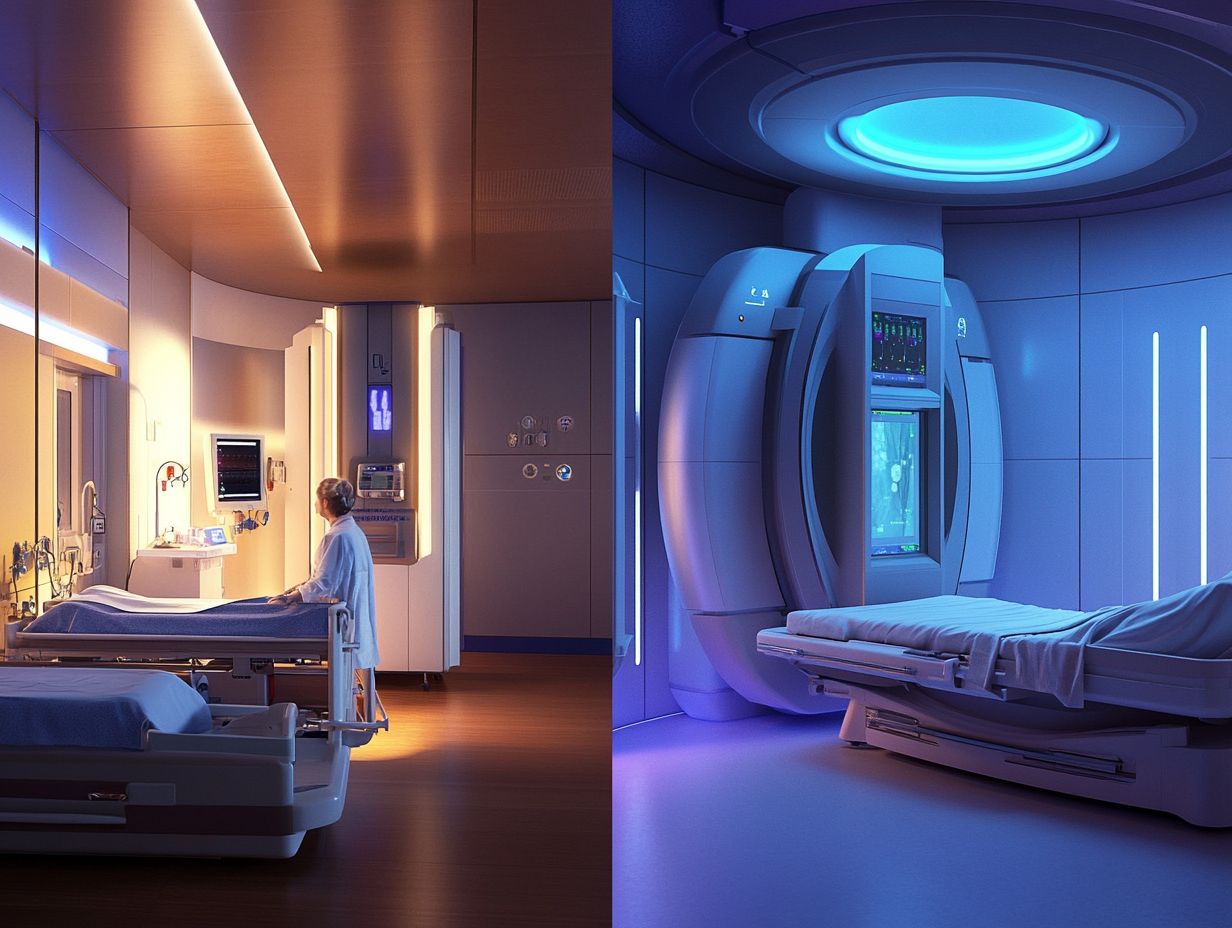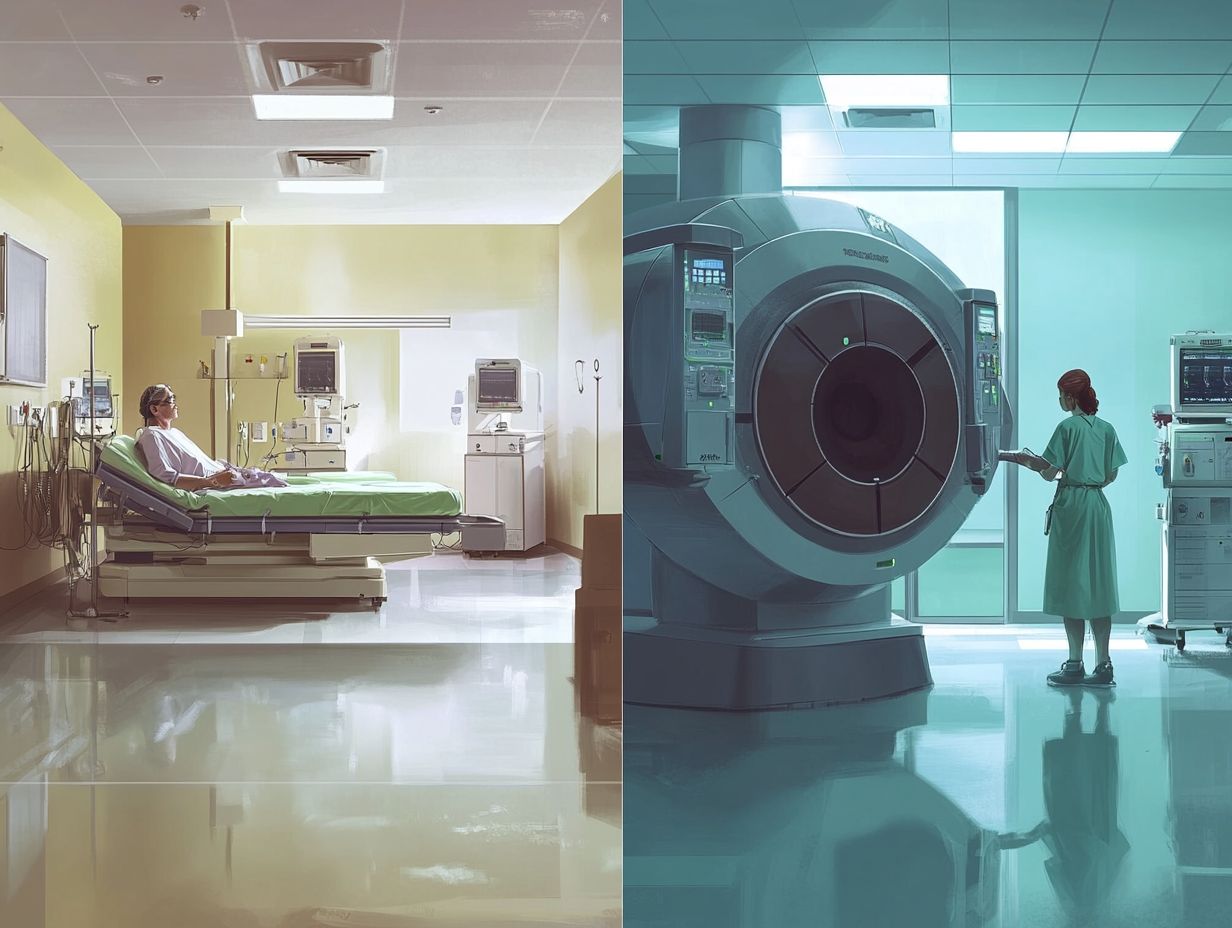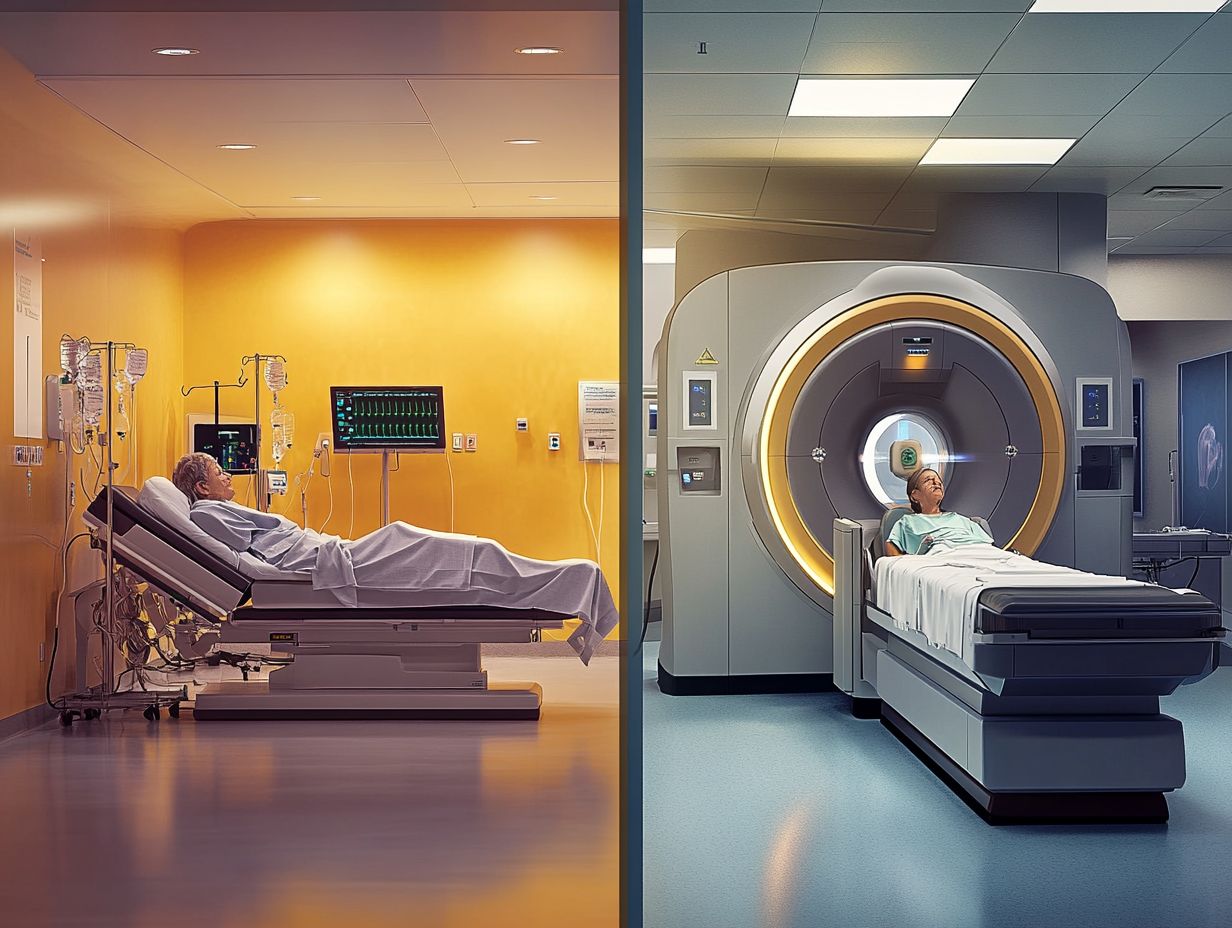Chemotherapy and radiation therapy are cornerstone treatments in cancer care, each with distinct mechanisms and applications. Chemotherapy involves administering drugs, either through intravenous infusion or oral medications, that target and kill cancer cells throughout the body, making it particularly effective for systemic cancers like leukemia.
Radiation therapy, on the other hand, uses high-energy beams, such as X-rays and protons, to destroy cancer cells in specific areas, proving more beneficial for localized tumors such as those found in the prostate.
While both treatments aim to eradicate cancer cells, they differ in their approach, effectiveness, and side effects. Chemotherapy is known for systemic side effects such as nausea and hair loss, whereas radiation therapy often causes localized skin irritation and other health conditions. The choice between these treatments depends on cancer type, stage, and patient health status, with oncologist recommendations guiding treatment decisions.
Often, a combination therapy approach is employed, leveraging the benefits of both treatments to enhance efficacy and improve survival rates in cancers like breast and lung cancer. Understanding the key differences between chemotherapy and radiation can guide personalized treatment plans, aiming to optimize patient outcomes while managing costs and accessibility. These treatment plans are often developed by a dedicated cancer care team, including oncologists, to ensure effective treatment and supportive care.
Key Takeaways:
What are Chemotherapy and Radiation?

Chemotherapy is a cancer treatment using drugs to kill cancer cells throughout the body.
Radiation therapy is a treatment that uses high-energy beams, such as X-rays or protons, to target and destroy cancer cells in specific areas.
Chemotherapy targets rapidly dividing cells systemically, while radiation therapy focuses on localized tumors.
Both treatments are used based on cancer types and patient health, with treatment intervals and approaches tailored to individual needs.
How They Work
Chemotherapy works by using drugs to target and kill cancer cells throughout the body, either through intravenous infusion or oral medication.
Radiation therapy works by aiming high-energy radiation beams at tumors to damage DNA and stop cancer cell growth. This targeted treatment is effective in shrinking tumors and managing cancer symptoms.
Mechanism of Action
The mechanism of action of chemotherapy involves using drugs that prevent cancer cells from growing and dividing by targeting their DNA and cell cycle. Chemotherapy drugs are delivered through methods like intravenous infusion or oral medications to maximize effectiveness.
Radiation therapy works by using high-energy radiation to damage the DNA of cancer cells, leading to cell death.
Both strategies aim to eliminate cancer cells and shrink tumors.
Effectiveness and Efficacy
Effectiveness measures how well a treatment works in real-world conditions, while efficacy measures how well a treatment works in controlled clinical trials.
In cancer treatment, the effectiveness and efficacy of chemotherapy and radiation therapy vary based on factors like cancer type, disease stage, and individual health.
Comparison of Success Rates

Success rates of chemotherapy and radiation therapy vary depending on cancer type and treatment strategy.
Chemotherapy often shows higher success rates for blood cancers like leukemia, while radiation therapy is more effective for localized tumors such as prostate cancer.
Combined therapies, including both methods, improve outcomes in many cases, such as breast cancer.
Side Effects and Risks
Chemotherapy side effects include fatigue, nausea, and hair loss. Radiation therapy side effects may involve skin irritation, localized discomfort, and other medical conditions, depending on the treatment area. Managing these side effects is crucial for maintaining the patient’s health status during cancer treatment.
Both chemotherapy and radiation therapy present specific risks associated with cancer treatment.
Common Side Effects and Potential Risks
Common side effects of chemotherapy include nausea, vomiting, and fatigue.
Radiation therapy side effects range from skin irritation to more severe health conditions.
Chemotherapy affects the whole body, while radiation impacts localized areas.
Side effects management involves medication, nutritional support, and collaboration with a medical team to improve patient care and health outcomes.
Cost and Accessibility
The cost and accessibility of chemotherapy and radiation therapy are influenced by factors such as location, healthcare policies, insurance coverage, and available treatment options at hospitals and cancer care facilities.
Cost affects the affordability of treatment, while accessibility determines how easily patients can receive these cancer therapies.
Affordability and Availability of Treatment Options

Affordability and availability of cancer treatment options affect patient access to chemotherapy and radiation therapy.
Factors influencing treatment access include treatment costs, insurance coverage, and healthcare facility locations.
Government programs and non-profits work to reduce barriers, aiming for equitable treatment access regardless of financial status.
Combination Therapy
Combination therapy involves using chemotherapy with radiation therapy to treat cancer.
Combination therapy enhances treatment effectiveness by improving tumor shrinkage, overall survival rates, and addressing both primary cancer and potential secondary cancers.
Combination therapy leverages the strengths of both chemotherapy and radiation to target cancer more effectively.
When and Why Combination Therapy is Used
Combination therapy is used in cancer treatment to enhance effectiveness by combining chemotherapy and radiation therapy, employing both external and internal radiation techniques as necessary.
Combination therapy is recommended for cancers like breast, lung, and colorectal, where it targets cancer cells from multiple angles.
Oncologists use combination therapy to improve patient outcomes by using personalized treatment plans that consider the patient’s health and cancer characteristics.
Frequently Asked Questions
What is the main difference between chemotherapy and radiation?

The main difference between chemotherapy and radiation is the way they work to fight cancer. Chemotherapy uses drugs to kill cancer cells, while radiation uses high-energy particles to destroy cancer cells.
How do chemotherapy and radiation affect the body differently?
Chemotherapy can affect the entire body, as the drugs travel through the bloodstream, impacting the immune system. Radiation is more targeted and only affects the specific area being treated, although some side effects may still occur.
Which type of treatment is more effective for cancer?
Both chemotherapy and radiation can be effective in treating cancer. The type of treatment used depends on the type of cancer, its stage, and the patient’s overall health.
Do chemotherapy and radiation have different side effects?
Yes, chemotherapy and radiation have different side effects. Common side effects of chemotherapy medications include hair loss, nausea, and fatigue, while common side effects of radiation therapy include skin irritation and fatigue.
Is it possible to receive both chemotherapy and radiation at the same time?
Yes, it is possible to receive both chemotherapy and radiation at the same time. This is often called concurrent therapy and can be used in certain cases to increase the effectiveness of treatment, especially in brain cancer and other complex conditions.
How do I know if I need chemotherapy or radiation for my cancer?
Your doctor will determine the best course of treatment for your cancer based on several factors, including the type and stage of cancer, your overall health, and the potential side effects of each type of treatment.





